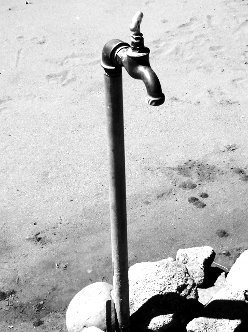NT releases water plan
 The Northern Territory has introduced its first comprehensive water plan, aiming to ensure water security for all Territorians.
The Northern Territory has introduced its first comprehensive water plan, aiming to ensure water security for all Territorians.
With a vision of a growing population and a $40 billion economy by 2030, the plan is meant to address the challenges posed by climate change and the need for water security tailored to the Territory's unique context.
It encompasses priority areas and actions that seek to strike a balance between providing safe and reliable drinking water, supporting economic development, preserving healthy ecosystems and country, and enhancing the Territory's livability.
Key objectives include prioritising safe drinking water for all residents, promoting sustainable development, improving water use efficiency and productivity, ensuring good governance and accountability in water management, protecting environmental and cultural values, and enhancing the Territory's resilience to climate change.
The Office of Water Security, a part of the Department of Environment, Parks, and Water Security, collaborated with all levels of government, community groups, stakeholder organisations, and business groups to shape the plan and establish the right mix of actions for better water security over the next three years and beyond.
Implementation of the plan is already underway, with several priority actions in progress.
These include the development of legislation for safe drinking water, the establishment of a water charging framework, improved water efficiency within the NT Government, and securing the future water supply for the Darwin region.
To support the plan's implementation, the NT government has allocated $13.5 million over three years.
Notably, the plan places a significant emphasis on expanding access to safe drinking water in remote communities.
The NT government has previously allocated $28 million over four years for remote water infrastructure projects, and some of these initiatives have already yielded positive results.
For example, a $6.8 million water treatment plant in Laramba, a remote community in Central Australia, successfully addressed elevated uranium levels in the water supply.
Rowan Riley from the Office of Water Security says the high cost associated with ensuring safe water supply in remote areas shows there is a need for targeted and efficient investment in water infrastructure.
To further bolster funding, the NT government is calling on the federal government for support in developing infrastructure.
Discussions are ongoing to secure additional funding through the national water grid initiative, with a focus on remote water infrastructure.
The plan also includes measures to diversify water sources and reduce reliance on the Darwin River Dam.
The reactivation of Manton Dam as Darwin's primary water source and the Adelaide River off-stream water storage project will contribute to the long-term water security goals.
The plan is accessible in PDF form, here. A summary of feedback received on the draft plan and earlier directions paper is available on the government’s Have Your Say website.








 Print
Print